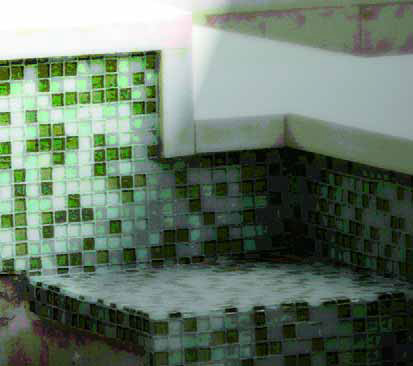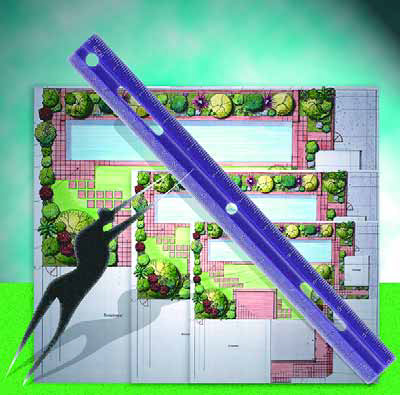waterfeature design
In December 2004, WaterShapes introduced ‘The Platinum Standard,’ a registry of projects that embodies watershaping…
In December 2004, WaterShapes introduced ‘The Platinum Standard,’ a registry of projects that embodies watershaping…
There are some things that are better seen than described. In the case of pool and spa equipment, for example, there are situations in which manufacturer instructions or two-dimensional plan drawings simply do not give the installer all the information needed to get things right the first time. As a result - and as everyone who installs equipment sets knows - the plumbing and layout of the equipment usually requires some level of on-site improvisation. In our work of designing hydraulic systems for complex watershapes - everything from commercial pool facilities to interactive waterfeatures and fountains - we've seen the need to find a way to specify precisely how we want our equipment sets to be installed. No two-dimensional plumbing schematic or manufacturer-supplied manual does that part of the job. That is, they do not completely delineate the way
Whether we function as designers or builders or both, we watershapers tend to be flexible folk: We mold ourselves to projects and situations and tasks when we're called on to apply our skills and experience, and this often leads us to perform in unanticipated ways. This sort of adaptability is a way of life for most of us: It's a talent we use to produce success. But even the most adaptable practitioners of the watershaping arts will, every once in a while, encounter a project that shocks the system, alters all formulas and breaks down familiar parameters. In these rare cases, just surviving the process is an accomplishment that brings a sense of relief as well as a sense of amazement that both you and the project made it through to completion. I was recently fortunate enough to be part of just such a project - a fascinating set of challenges now known as the Smithsonian Institution's National Museum of the American Indian in Washington, D.C. It's the last museum that will be
With some details, seeing is believing. That's certainly the case with the one we'll consider in this column, where the images will do much of the work in defining a simple but elegant way of making a statement with any raised bond beam or wall. Yet again, it's testimonial to the good things that happen when watershapers know how to control materials and infuse their work with visual appeal. Most of the time when pool people build small or medium-size walls, they'll automatically be topped with some form of coping or capstone - anything from poured-in-place concrete or stone to brick or some pre-fabricated coping. Many of these walls are
It's amazing how the traditions of art and craft tracing back through centuries still inform today's designs. That's particularly true in the field of garden ornamentation, where modern statuary, fountains, vases and seating elements take their cues from original works found in ancient Greece and China, in Renaissance Italy and France - and from just about every other era and location around and between. This depth of available imagery is both a boon and a challenge to those in the business of supplying garden ornaments to today's architects, landscape architects, watershapers and their clients. There's just
Water is one of the few artistic media that has the ability to define the architecture of human emotion. In all its various forms, it has affected us in profound ways since the dawn of our species, generating powerful feelings and the sense that we are somehow transformed when we're in its presence. As watershapers, we have an ability to use that long anthropological and cultural heritage to our advantage and can actually change the world: The spaces we create will, if done well, generate experiences so powerful that all who enter these environments will forever be changed by the encounter. I see this as both a wonderful opportunity and a solemn obligation. We can take the rich history of water and all its cultural reverberations and essentially use this symphony of tradition and creative impetuosity to compose new experiences for everyone who sees our work. If it's our intention to change the world for the better - something I personally have always held in mind - we do our best when we base our work on traditions assembled throughout human history. Working in that context, we not only gain access to the insights of the geniuses who have gone before us but also
We've always based our work as tile artists on refusing to allow existing rules and conventions to get in the way: We push at all boundaries and always seek something more exciting to create. That undaunted spirit of breaking new ground started with my parents, who established Craig Bragdy Design Ltd. in Wales just after World War II. Jean and Rhys "Taffy" Powell met in art school, had four rowdy boys and started the business by producing decorative ceramic products - coffee and tea cups, dishes, salt and pepper sets and a host of other smallish daily items. Even then, they were swimming against the tide: In the postwar United Kingdom, most people were interested in purely practical products and certainly
It's a point I'll probably make to the end of my days: There is no substitute for travel and exploration of the historic world to learn about design. In my "Details" column in the June 2005 issue of WaterShapes, for example, I discussed my recent trip to Turkey and made the point that the ruins and intact structures we examined while there were full of specific details that I and other watershapers use in our work - whether or not we recognize that what we're doing actually derives from ancient original works. Showing what I mean in the clearest possible terms is what this pictorial article is all about. As you will see, I've included
Most of us are in business to earn a living, which is probably why so many of us think of the high-end market as the place to be. In general, of course, the bigger the job, the larger the paycheck will be. But when I look more closely at the work I've done through my career, I believe we might be overlooking valuable opportunities for personal and professional growth by being so single-minded in pursuing grand, big-ticket jobs. When I started my business 15 years ago, I was happy to find work on small borders in small spaces. Since then, I'm proud of the fact that I have worked my way up to designing for multiple-acre estates. To be sure, I much prefer having a few large jobs to a bunch of smaller ones, but





















